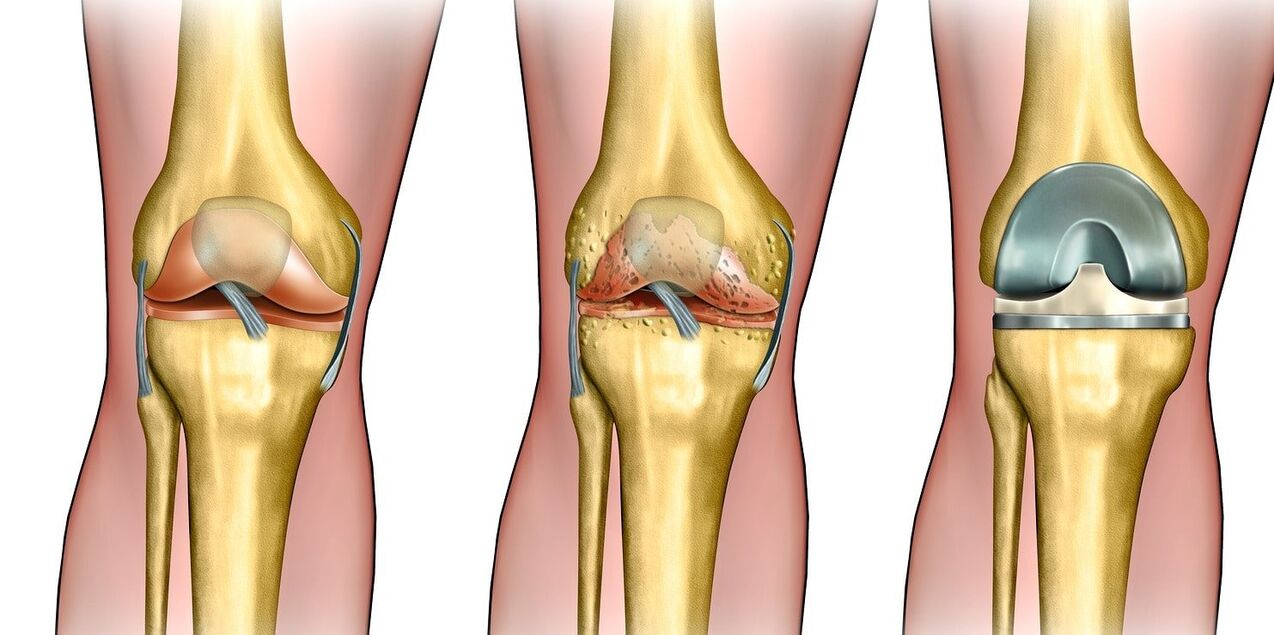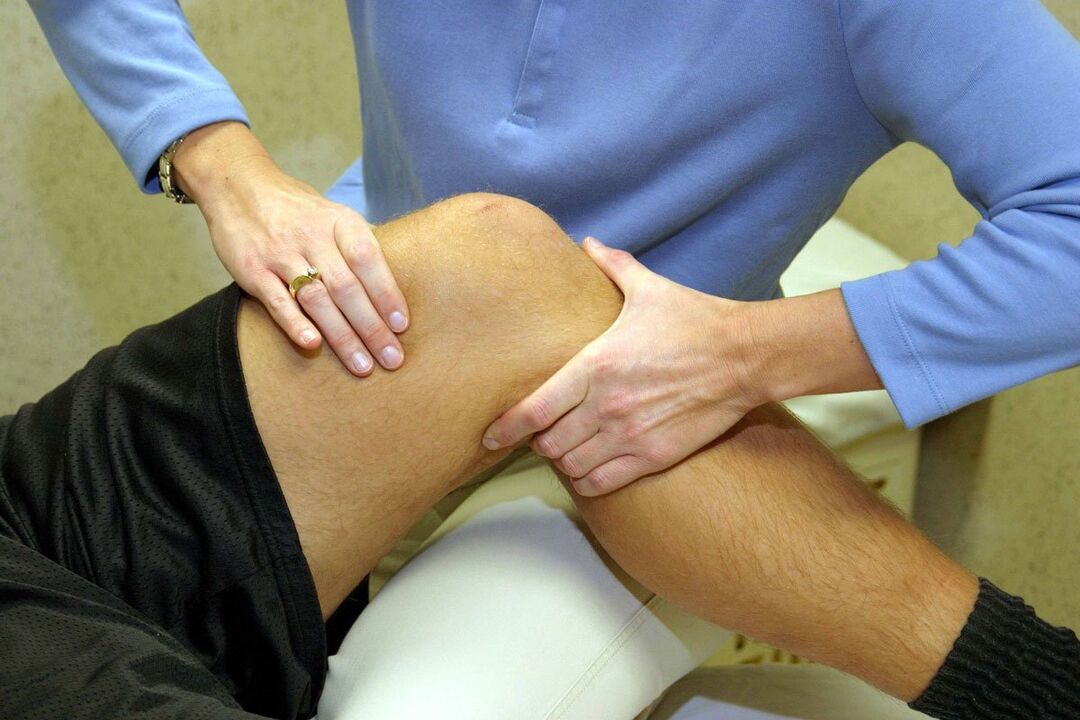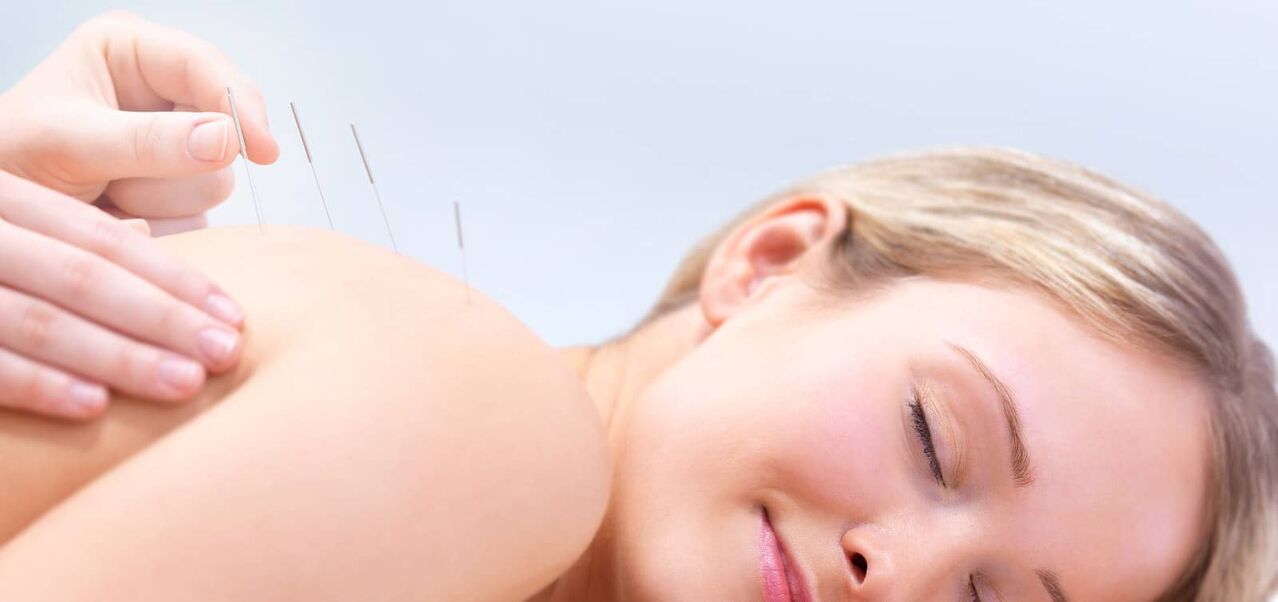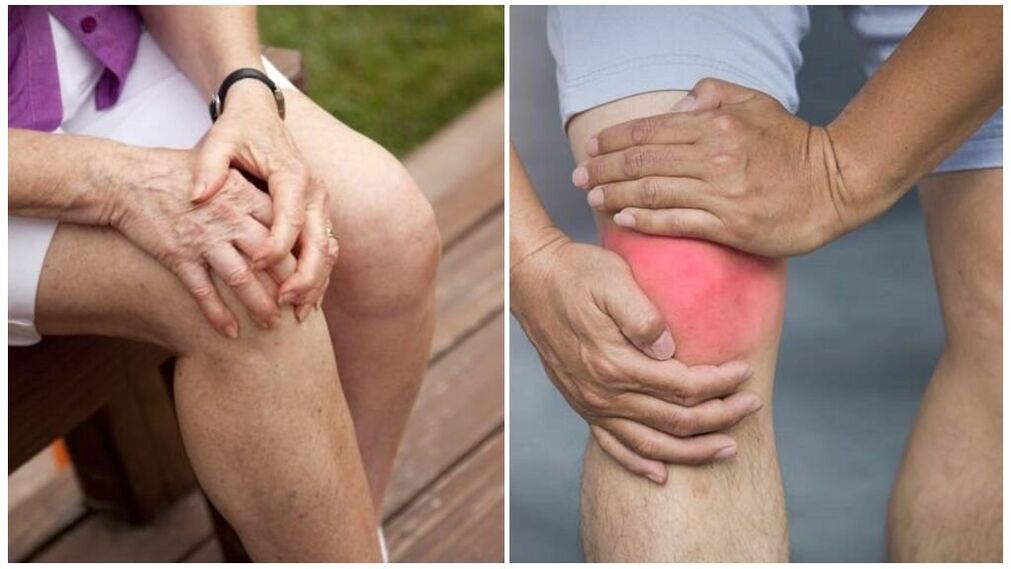Arthrosis is a disease whose symptoms should know.This dangerous and very common pathology at an early stage can be almost invisible, however, progress, capable of causing unbearable pain and even leading to disability.We will talk about how to avoid this in our article.

Why does arttrosis occur and when should you continue to treat it
Pain in the joints, "click" when moving and reduces the mobility of the extremities often pass unnoticed: most people do not pay attention to such body signals.Meanwhile, these symptoms can indicate a serious illness - arthrosis.
Arthrosis deformity is a disease that consists of destroying and thinning the joint of the joint cartilage.At the same time, the joint fabric becomes looser and increases, leading to the end of the appearance of bone processes and inflammation within the joint.
At an early stage, patients suffer little discomfort in movements that may not pay attention.In the second stage of the disease, severe pain occurs, leading to the limitation of joint mobility.The third phase, in addition to the pain, is associated with complete or almost complete destruction of the joint of the joint.
Significantly slow down the development of arthrosis, help maintain limb movement and avoid serious surgical intervention with time therapy - this is why it is so important to turn to the rheumatologist in the first symptoms.
The treatment of arthrosis
From the perspective of European medicine, treatment of such a serious illness as arthritis requires an integrated approach taking into account the symptoms at different stages of the disease.In the complex of therapeutic masses, in addition to taking medication, they include measures to reduce weight, kinesiotherapy, physiotherapy and if necessary, surgery is prescribed.The treatment program is compiled by a heraldologist, taking into account the localization of the disease, the characteristics of the patient's body, but necessarily involves a range of actions that aim to fight the manifestations of the disease.

Treatment
The first task that occurs in the treatment of arthrosis is to remove pain and inflammation in the joints.For this, non -steroidal anti -inflammatory (NSAIDs) medicines, such as ibuprofen, Ketorolac, pyroxicam, diclofenac and their derivatives in the form of tablets, injections, ointments or rectum candles.Remember that the use of this group of medicines relieves only the main symptoms of the disease.Moreover, a long -term reception of NSAIDs is able to accelerate the process of destruction of the cartilage, so it is necessary to use them with great care and only as prescribed by the doctor.
The use of analgesics is another way to save the patient from pain.Unlike NSAIDs, analgesics to a lesser extent facilitate inflammatory but more effective processes in the fight against pain.In case of muscle spasms, antispasmodics are prescribed, such as midokalm.Both groups of medicines are most often used in the form of injections to relieve arthrosis symptoms, and they are ineffective to fight the disease itself.
Chondroprotectors are one of the most important ingredients of arthrosis medicines: they saturate the cartilage tissue with nutrients, stimulating cell growth.The group of chondroprotectors belongs, for example, glucosamine produced in the form of tablets or capsules.You should not expect a rapid effect from using chondroprotectors: an improvement in cartilage condition can only be observed after prolonged medication administration.In addition, they will not help if the disease has reached the third, more severe phase.
Vasodilator drugs are used to improve blood flow as well as eliminate small vessel spasms.Taking such medicines in combination with chondroprotectors increases the effect of the latter: nutrients enter the cartilage tissue in a larger volume.
Physiotherapy
- Shock wave therapy.The use of shock wave therapy (UVT) with arthritis allows you to eliminate one of the leading causes of pain: bone processes similar to Spip-osteophytes.Under the influence of ultrasound waves, the "points" are softened and resolved over time, the effectiveness of blood flow and metabolic processes improves.For all advantages, shock wave therapy is effective only in the early stages of arthrosis and has many contraindications, so it is carefully described.
- Electromyostimulation automated verticalism.The use of electrical impulses for muscle contraction is mainly advised for patients in bed, as well as in the presence of severe injuries, when the necessary physical exercises are contraindicated.Although electromyostimulation is not the most common goal for arthrosis, its use helps to increase muscle tone and improve blood circulation, which positively affects the dynamics of recovery.
- Ultrafonophoresis.This procedure combines two types of exposure immediately - ultrasonic waves and medicines.As a result, phonophoresis allows you to significantly increase the effect of medication: thanks to the ultrasound of their substances, they are delivered to the "target" cells and are absorbed by those who are much more active.
- Ozonotherapy.Introducing a gas mixture into the articular capsule reduces pain and inflammation, helps restore joint mobility, improves blood circulation.As a rule, ozone therapy is described by a course of several injections depending on the severity of the disease.
Methods of traditional Chinese medicine

In Chinese medicine, the restoration of joint health begins with the diagnosis, during which the general condition of the body is evaluated and the root cause of arthrosis is detected.Then the doctor designs an impact program on biologically active points.Complex arthrosis treatment includes the following TCM methods:
- acupuncture (acupuncture) - placement of the best needles in points in a certain combination;
- Phytocompressses - "squeeze" from medicinal plants;
- Moxotherapy - lit by wormwood cigarettes;
- Acupresure Tuyna.
At the same time, acupuncture is focused on acupuncture as the most effective method of treatment in traditional Chinese medicine.The results of the therapy depend largely on the qualifications of a specialist.Being in the hands of a skilled physician, the patient will soon be able to mark an improvement in well -being, associated with removal of pain, restoring joint mobility, strengthening immunity, normalizing blood circulation and metabolism [2].
Other non -surgical treatment methods of arthrosis:
- Medical physical education.LFK for arthritis is considered a great way to improve blood circulation in the area of the affected joint, as well as to strengthen the muscles.As a rule, the doctor recommends to start with simple exercises, gradually increasing the number of repetitions.
- Mechanicotherapy.Physical media education can be supplemented by mechanism - exercises using special simulators.Equipment allows you to increase the load during gymnastics (due to various weighing agents), protecting the node diseased from damage.Like exercise therapy, the mechanism helps improve blood circulation, an increase in muscle tone.
- Common traffic.The essence of the procedure is the mechanical "pull" of the joint in a special apparatus for 15-20 minutes.This allows you to reduce the load on the joint, slow down the development of arthrosis and significantly reduce the pain in the patient.The course consisting of 10-12 sessions is performed for about six months to improve and consolidate the result.
- Lymphatic drainage and heat massage.These procedures contribute to the heating of the diseased area, removing spasm and pain, improving the bloodstream in the joints.Lymphatic drainage and heat massage can also be used with limited patient mobility.
- The purpose of dietary food.Weight correction is one of the ways to significantly reduce the load on the joint and to slow down the development of arthrosis.Of course, maintaining a diet itself does not contribute to recovery, however, in combination with other procedures, it can give a certain effect.
- Life style correction.To combat arthritis, the patient will need to significantly reconsider the usual way of life and begin to wear only comfortable shoes, use only comfortable furniture, while women will have to abandon high heels.It is also advisable to get rid of bad habits and exclude excessive physical activity.In some cases, wearing an orthosis, regular visit to the pool and bath will benefit.An exhaustive list of recommendations can be obtained from the attending physician, who will be based on the patient's condition.
Surgical treatment
- Puncture (minimum invasive intervention).It is also used to diagnose the disease.The needle is inserted into the joint capsule, taking parts of the fluid - it allows you to get materials for analysis, reduce the load on the capsule and, if necessary, also administer corticosteroid medication directly in the focus of inflammation.
- Arthroscopy is diagnostic.Arthroscopy is the introduction of a special apparatus of an arthroscopy through the microwaves into the skin.This allows you to examine the union carefully as well as remove the separate cartilage fragments, eliminating the causes of the process and inflammatory pain.
- Osteotomy is the angle.The essence of this surgical procedure is to present the patient's bones with their subsequent fixation from another angle.Operation allows you to reduce the load on the joint and eliminate the pain for a long period.Such a radical effect is rarely described - the load on the patient's body is very high and the rehabilitation period is very long.
- Endoprostetics.In cases where other types of treatment did not help, and the disease completely or almost completely destroyed the joints, they are replaced with plastic, metal or ceramic dentures.Endoprostetics is a difficult and expensive operation that requires prolonged rehabilitation.Many patients for a few months after the pain of the hard work of surgery.However, endoprosthetics for the patient is often the only alternative for immobilized perspective.The service life of modern prosthesis reaches twenty years, and throughout the years the patient will be able to live a full life.
The symptoms and features of the treatment of arthrosis of different types

Despite the general features of the symptoms, arthrosis of different joints has its own signs and characteristics of treatment.For example, the use of ointments for hip joint arthrosis is ineffective due to muscle tissue and fat that prevents the introduction of the drug into the site of inflammation.But the same ointments are well shown when applied to the knee or elbow joint.Let's see what symptoms are characteristic of arthrosis of the joints (ankle, knee, elbow, shoulder, fingers and hip) and what treatment is suitable for each case.
- Treatment of arthrosis of the brush joints.At an early stage, the disease only gives itself with a slight pain and mild pain with the movements of the hands, but in the absence of treatment it becomes visually apparent: obvious thickening arises in phalanxes in the joints.The pain intensifies and becomes constant, a burning sensation and pulsation on the fingers appear.To relieve pain and inflammation, NSAIDs and corticosteroids are used, to slow down the destruction of the cartilage - massage, chondroprotectors and fingers.
- Treatment of shoulder joint arthrosis.Painful muscle jumps, reducing hand mobility, "shots" when you grow and leave them on the sides - all of these are the symptoms of shoulder joint arthrosis.Help massage, physiotherapy exercises in combination using antispasmodics and intra -articular injections of sedatives.
- Treatment of elbow joint arthrosis.Symptoms of elbow joint disease are a loud cramp when bending your hands to the elbows and when moving with tassels, "shooting" pain and weakness in the muscles.To get rid of this type of arthrosis, physiotherapeutic procedures, non -inflammatory drugs and drugs are used in the form of ointments.
- Treatment of hip joint arthrosis.TBS arthritis is characterized by "soft" harvest joints, painful or unpleasant sensations in the lower back during movement or severe fatigue.In the treatment of the disease, painkillers are prescribed in the form of injections, capsules or tablets, compresses with anti -inflammatory solutions.
- Treatment of knee joint arthrosis.With gonarthrosis, patients complain about fresh sounds during movements, pain in the ICR area, especially with severe loads and an increase in the size of the joint.Complex therapy includes: shock wave therapy, joint traffic, physiotherapy exercises, use of non-steroidal anti-inflammatory drugs (ointments), as well as the use of compresses.
- Treatment of ankle joint arthrosis.Feeling of tingling, redness, cramping, clicks on the foot, fatigue when walking - these symptoms indicate the development of ankle arthrosis.In the treatment of this type of disease, physiotherapy, massage and therapeutic baths are effective.The ankle load should also be reduced.
To avoid the appearance of arthrosis, especially in the presence of a predisposition, you must adhere to simple rules: wearing comfortable shoes, maintain physical activity while observing the mass during loads, avoiding damage and hypothermia.To prevent the disease, it is especially important to maintain normal weight because every additional kilo increases the load on the joints.


















